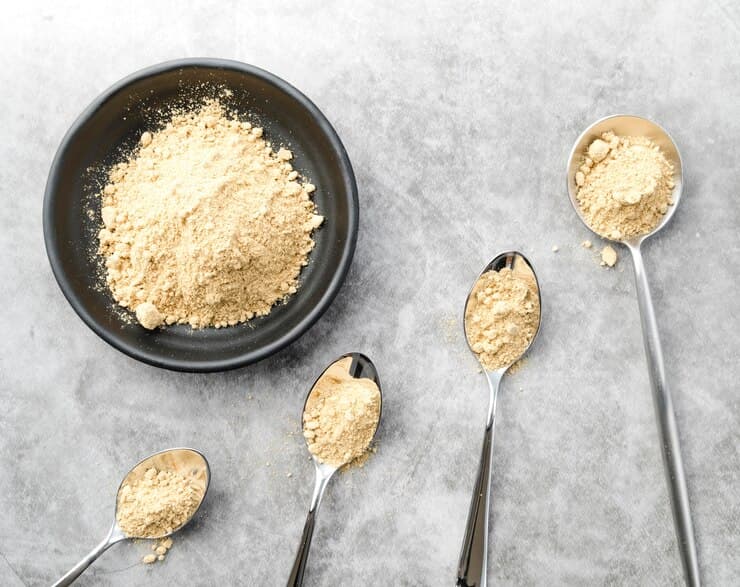For those seeking to augment their macronutrient intake, protein supplements, particularly protein powder, are a popular choice. This article provides an insightful journey into the intricate process of crafting protein powder, covering its various types, advantages, disadvantages, and answering common queries.
Decoding the Creating of Protein Powder Production
The initial step involves breaking cell membranes and walls surrounding protein molecules. This can be achieved through mechanical methods like grinding or non-mechanical approaches such as heat or enzymes. The choice of method depends on the source; for example, plant cells necessitate more force than animal cells.
Solubilization
Solubilization is the art of dissolving protein molecules in a suitable buffer or solvent by adjusting factors like pH, ionic strength, or polarity. Method selection hinges on solubility, stability, and compatibility with subsequent steps. For instance, specific proteins exhibit higher solubility at particular pH levels.
Precipitation
The third step involves separating molecules by reducing solubility through alterations in solution conditions. This can be achieved by changing temperature or adding agents like acids. The method of precipitation is chosen based on selectivity, efficiency, protein quality, and quantity.
Following precipitation, proteins are collected and dried using methods like lyophilization. The resultant dried protein can be processed into concentrate, isolate, or hydrolysate, each offering distinct characteristics.
Explore how to make the best protein powder at home
A Palette of Choices: Whey
Derived from milk, whey boasts high protein content (80-90% by weight) and a commendable biological value. Fast-digesting, it supports muscle growth, recovery, and immune function. However, potential drawbacks include allergies and digestive issues.
Casein
Also from milk, casein (70-80% protein) exhibits a high biological value. Its slow-digesting nature is ideal for preventing muscle breakdown during sleep. Benefits include muscle retention and calcium intake, yet it may cause lactose intolerance, allergies, or digestive issues.
Discover the advantages of recumbent bikes and how they can contribute to your fitness goals.
Egg
Egg protein (80-85% protein) mirrors whey’s high biological value and fast-digesting nature. It aids muscle growth, recovery, and is low in fat and carbs. Drawbacks may include potential allergies, digestive issues, and taste concerns.
Soy
Soy protein (60-90% protein) stands out as a complete, plant-based alternative comparable to animal-based proteins. Benefits encompass muscle growth, recovery, antioxidant properties, and cholesterol-lowering. However, allergies, digestive issues, anti-nutrients, and phytoestrogens are potential drawbacks.
Pea
Pea protein (80-85% protein) is a plant-based, hypoallergenic option that is easy to digest. Benefits include muscle growth, environmentally friendly production, and high fiber content. Drawbacks may include an incomplete amino acid profile and a bland taste.
Hemp
Hemp protein (12-15% protein) is a plant-based, vegan option with environmental benefits. It provides omega-3 and omega-6 fatty acids, minerals, and antioxidants. Drawbacks include low protein content, low bioavailability, and potential THC presence.
Evolution in Protein Powder Landscape: Unveiling Trends
Traditional whey protein extraction methods persist, but innovations like microfiltration take center stage. This process preserves protein integrity, resulting in a purer product with enhanced nutritional value. Microfiltration minimizes protein denaturation, ensuring optimal bioavailability and retaining essential amino acids.
The surge in plant-based diets fuels innovation in protein powders. Beyond familiar options like soy, pea, and hemp, emerging sources like pumpkin seed, sunflower seed, and watermelon seed are gaining prominence. These alternatives offer diverse amino acid profiles, catering to specific dietary preferences or allergies.
Learn about common mistakes to sidestep when performing neutral grip pull-ups, ensuring you maximize the benefits of this exercise.
FAQs
Can I Craft Protein Powder at Home?
Crafting protein powder at home involves intricate processes and specific equipment. Selecting a protein source, extraction, isolation, and drying require meticulous attention. However, replicating commercial-grade products can be challenging.
Identifying the Ideal Protein Powder
Choosing the right protein powder depends on factors like dietary preferences, fitness goals, and potential allergies. Whether opting for animal-based whey or plant-based pea protein, understanding unique needs guides the selection process.
Conclusion
Understanding the nuances of protein powder production goes beyond manufacturing intricacies. Staying informed about evolving trends is crucial. As consumer consciousness grows, manufacturers respond with innovative solutions, ensuring protein supplementation aligns with diverse lifestyles and preferences.
In your pursuit of a healthier, more robust lifestyle, let this guide serve as your compass. From decoding manufacturing processes to exploring the latest trends, empower yourself with knowledge to make informed choices on your protein supplementation journey.
